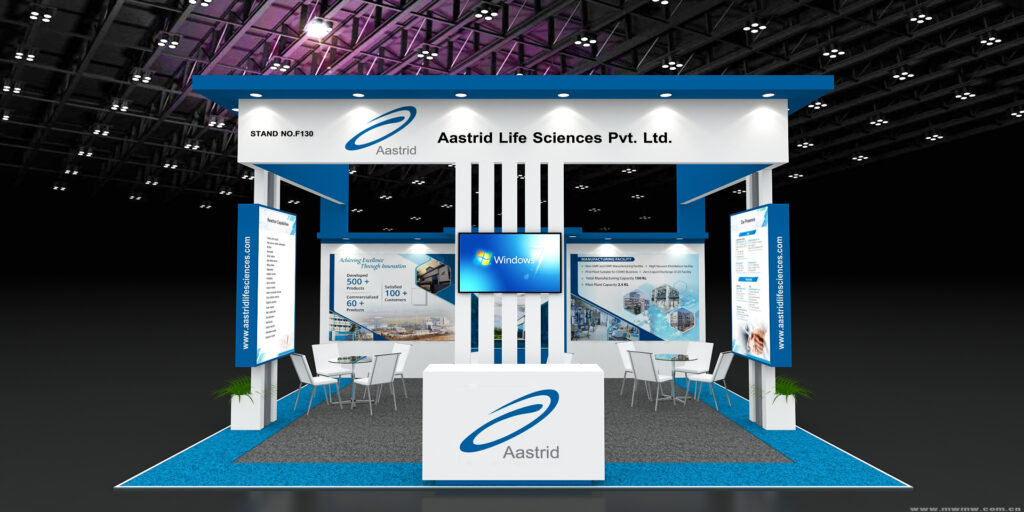In today’s competitive business world, trade shows and exhibitions serve as powerful platforms for brand visibility, networking, and lead generation. However, with hundreds of exhibitors vying for attention, having a well-designed exhibition stand is crucial. Whether you’re a business owner, marketing professional, or event planner, understanding the intricacies of exhibition stand design can significantly impact your success.
This comprehensive guide explores the essential aspects of exhibition stand building, from conceptualization to execution, ensuring that your brand stands out in any event.
1. Understanding the Role of an Exhibition Stand Builder
Exhibition stand builders play a critical role in transforming your vision into a tangible, engaging space that reflects your brand’s identity. They are responsible for:
- Custom Stand Design: Creating unique layouts that align with branding and marketing objectives.
- Structural Engineering: Ensuring stability and safety while maintaining aesthetic appeal.
- Logistics and Installation: Managing transport, assembly, and dismantling for seamless execution.
- Technology Integration: Incorporating digital screens, interactive displays, and lighting to enhance engagement.
Choosing an experienced exhibition stand builder can make the difference between an ordinary setup and a visually striking booth that attracts visitors.
2. Types of Exhibition Stands
Depending on your budget, space availability, and branding requirements, there are different types of exhibition stands to consider:
a) Custom Exhibition Stands
Tailor-made to fit a company’s branding and objectives, these stands provide maximum flexibility in design, allowing for unique shapes, materials, and finishes. They are ideal for businesses looking to make a bold statement.
b) Modular Exhibition Stands
Modular stands offer versatility and reusability. They consist of interchangeable components that can be reconfigured for different events, making them a cost-effective solution for frequent exhibitors.
c) Shell Scheme Stands
Often provided by event organizers, these are basic, pre-built structures that exhibitors can customize with branding materials. While limited in design, they are suitable for small businesses and startups.
d) Portable Exhibition Stands
Lightweight and easy to transport, these include pop-up stands, banner displays, and fabric booths. They are perfect for businesses that require a simple yet effective presence at multiple events.
3. Key Elements of a High-Impact Exhibition Stand
To create a stand that captures attention and maximizes engagement, consider the following elements:
a) Strategic Layout and Flow
Your stand should facilitate smooth visitor movement, encouraging them to explore different sections without feeling overwhelmed. Common layouts include:
- Island Stands: Open on all sides, allowing 360-degree visibility.
- Corner Stands: Accessible from two sides, offering good exposure.
- Linear Stands: Positioned against a wall, requiring strategic front-facing elements.
b) Branding and Visual Appeal
A cohesive brand presence is crucial. Use high-resolution graphics, consistent colors, and eye-catching signage to reinforce your brand identity. Invest in high-quality printing to ensure sharp, professional visuals.
c) Lighting and Ambience
Proper lighting enhances the overall impact of your stand. Consider:
- Spotlights: To highlight key products or messages.
- Backlit Displays: To create a striking, modern look.
- LED Strips: For dynamic color changes and effects.
d) Interactive and Digital Features
Integrate technology to engage visitors and create memorable experiences:
- Touchscreens and Kiosks: For product demos and digital catalogs.
- Augmented Reality (AR) & Virtual Reality (VR): To offer immersive brand experiences.
- Live Social Media Feeds: Displaying event highlights and customer interactions.
e) Comfortable and Engaging Spaces
Incorporate seating areas, meeting pods, or private discussion zones for meaningful conversations. A well-designed lounge area can encourage visitors to spend more time at your stand.
4. Budgeting and Cost Considerations
Exhibition stand costs vary depending on size, materials, and complexity. Here’s a general cost breakdown:
- Small Pop-Up Stand: £1,000 – £5,000
- Mid-Sized Custom Stand: £5,000 – £20,000
- Large Custom Exhibition Stand: £20,000+
Key cost factors include:
- Stand size and materials (wood, metal, fabric, glass)
- Custom vs. modular design
- Technology integration (LED screens, VR/AR setups)
- Logistics and transportation
- On-site assembly and dismantling
5. Sustainability in Exhibition Stand Design
With the increasing focus on environmental responsibility, businesses are opting for sustainable exhibition solutions. Some eco-friendly practices include:
- Using Recyclable Materials: Opt for bamboo, fabric, and modular aluminum frames.
- Energy-Efficient Lighting: Replace halogen bulbs with LED lighting.
- Reusable Stand Components: Modular designs allow multiple uses with minor modifications.
- Digital Brochures: Reduce paper waste by using QR codes for digital content.
Sustainability not only reduces costs but also enhances brand reputation among eco-conscious consumers.
6. The Exhibition Stand Building Process
From concept to execution, here’s how exhibition stands are built:
a) Planning & Concept Development
- Define objectives (brand awareness, lead generation, networking).
- Choose an exhibition space and stand type.
- Collaborate with designers to develop a visual concept.
b) Stand Design & Approval
- 3D renderings and CAD drawings are created.
- Materials and technology components are finalized.
- Client feedback is incorporated before final approval.
c) Construction & Production
- Materials are sourced and fabrication begins.
- Graphics are printed and integrated into the structure.
- Pre-event assembly testing ensures quality control.
d) Installation & On-Site Setup
- Transport and logistics are managed.
- Stand is assembled at the venue.
- Final checks ensure everything is functional.
e) Dismantling & Storage
- After the event, the stand is carefully dismantled.
- Components are stored for future use or repurposed.
7. Maximizing ROI from Your Exhibition Stand
To ensure your investment yields strong returns, follow these strategies:
a) Pre-Event Marketing
- Promote your participation on social media and email newsletters.
- Schedule meetings with potential clients in advance.
- Offer exclusive event promotions or giveaways.
b) Engaging Stand Activities
- Host live product demonstrations.
- Run interactive contests or games.
- Provide hands-on experiences for visitors.
c) Staff Training and Attendee Engagement
- Train your team on key talking points and engagement strategies.
- Assign dedicated personnel to answer technical queries.
- Capture visitor data for follow-ups.
d) Post-Event Follow-Up
- Send thank-you emails with additional product information.
- Schedule follow-up calls with high-potential leads.
- Analyze event metrics to refine future strategies.
Conclusion
A well-designed exhibition stand can significantly enhance your brand’s visibility, engagement, and sales potential at trade shows. By partnering with the right exhibition stand builder in Birmingham and focusing on creativity, technology, and sustainability, you can ensure a strong impact at any event. Whether you’re planning your first exhibition or looking to improve your next one, investing in a compelling stand design is a step towards trade show success.






